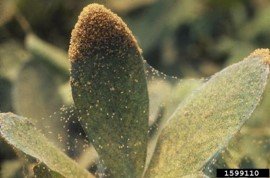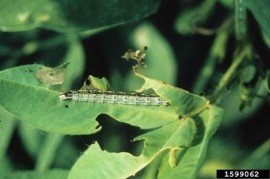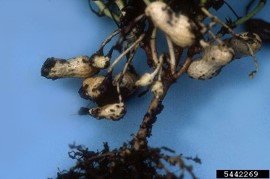Schedule
Groundnut Crop Schedule
| Product Name | Fertilizers | |||||||||
|---|---|---|---|---|---|---|---|---|---|---|
| PROM/ Organic Fertilizer |
Poornima Kit | NPK Grow Caps |
Rhizo | Humigrow Nano Powder |
Alp | Sonha-Bihan | Amavasya Kit | IBP-Kit | ||
| Humic Acid | Chelated Multi-micronutrient |
PGP/PGR | ||||||||
| Land Reparation | week -2 | |||||||||
| Soil Treatment | week -1 | 1 Kit | ||||||||
| Before Seed Sowing | week 0 | |||||||||
| Germination | week 1 | 25 kg | ||||||||
| Vegetative Growth | week 2 | 1 Kit | 1 Caps | |||||||
| week 3 | ||||||||||
| week 4 | 1 Kit | |||||||||
| week 5 | 1 Caps | 1 Caps | 120gm | |||||||
| week 6 | 250gm | 250gm | ||||||||
| week 7 | 1 Kit | |||||||||
| week 8 | ||||||||||
| week 9 | 1 Kit | |||||||||
| Harvesting Flowering/ Fruiting/ |
week 10 | 1 Kit | ||||||||
| week 11 | ||||||||||
| week 12 | ||||||||||
| week 13 | 1 Caps | 1 Caps | 120gm | |||||||
| week 14 | ||||||||||
| Harvesting | ||||||||||
| Total Quantity | 25 kg | 2 Kit | 2 Caps | 3 Caps | 240gm | 250gm | 250gm | 2 Kit | 2 Kit | |
| Broadcast | |
| Top Dressing | |
| Basal Dressing | |
| Soil Application | |
| Spray | |
| * | Optional |
NOTE: For the first year donot immidietaly substitute 100% chemical fertilizer with the SIESTO GREEN products, as the soil is used to chemical fertilizer, it may affect the output. So the best way to substitute is by reducing 50% of chemical input in the first year, 25% the following 2nd year, & then another 10% by the 3rd year. After the 3rd year use synthetic fertilizer / inorganic fertilizer if their is a requirement depending on the soil health.
CROP SCHEDULE FOR GROUNDNUTCROP
Sr. No.
Treatment / Application
Product
Dose / Acre
APPLICATION
Management
1
Vegetative – Dissolve in 20 to 200 ltr. of water as required for 1 acre of land and apply through Drip Irrigation or drench.
POORNIMA KIT + Rhizo caps
1 Kit
Apply after germination that is week 2 and week 9
It is a balanced form of nutrients that includes NPK, Zinc, Cropforce NP, Humigrow NP, and Mycorrhiza NP
2
Vegetative – Mix all with the required amount of water and apply through drip irrigation, flood irrigation, or drenching as per farmer’s availability.
NPK + Rhizo caps + Humigrow
1 Caps + 1 Caps 120gm
Apply it in week 5 and 13
It is a balanced form of Nutrition that includes NPK.
3
Flowering/ Fruiting – Mix both in 20 – 200 liters of water as per requirement and spray it in the plants.
ALP + Sonhabihan
250gm + 250gm/ 200 lit. of water
Apply it in week 6 (When flower bud are seen) and further more if required
It is a Micronutrient and PGP that helps in Growth, Fruit set, and the quality of the produce.
4
Vegetative and Flowering/ Fruiting – Mix all with the required amount of water and apply through foliar spray or drenching as per infestation of insect.
Amavasya kit
1 kit
Apply it in week 4 and 10
It is a balanced form of insecticides which include Traps, lifeline, Bt, Acarida, and Meta capsules.
5
Soil Treatment – Dissolve in 20lit. to 200lit. of water as per requirement for 1 acre of land and apply through drip irrigation or drench.
IBP KIT
1 kit
Apply it before sowing and in week 7
It prevents soil-borne diseases and nematodes. Apply as per the soil health and soil-borne diseases.
PEST ATTACKS, BACTERIAL, OR FUNGAL MANAGEMENT
PEST / BACTERIAL / FUNGAL
IDENTIFICATION IN CROP
SYMPTOMS
SUGGESTED PRODUCT
Thrips
 If a population is high, leaves may be distorted; leaves are covered in coarse stippling and may appear silvery; leaves speckled with black feces.
Lifeline + Traps + Meta + BT
Mite
If a population is high, leaves may be distorted; leaves are covered in coarse stippling and may appear silvery; leaves speckled with black feces.
Lifeline + Traps + Meta + BT
Mite
 Leaves stippled with yellow; leaves may appear bronzed; webbing covering leaves; mites may be visible as tiny moving dots on the webs or underside of leaves.
Acarida + Traps + BT
Armyworm
Leaves stippled with yellow; leaves may appear bronzed; webbing covering leaves; mites may be visible as tiny moving dots on the webs or underside of leaves.
Acarida + Traps + BT
Armyworm
 Singular, or closely grouped circular to irregularly shaped holes in foliage; heavy feeding by young larvae leads to skeletonized leaves; shallow, dry wounds on fruit.
BT + Meta
Southern Stem Rot
Singular, or closely grouped circular to irregularly shaped holes in foliage; heavy feeding by young larvae leads to skeletonized leaves; shallow, dry wounds on fruit.
BT + Meta
Southern Stem Rot
 Lateral branches or main stem yellowing and wilting; white fungal mat developing on the stem close to the soil line; white to brown spore-containing structures developing from the fungal mats.
Indofa + Bacillus
Verticillium Wilt
Lateral branches or main stem yellowing and wilting; white fungal mat developing on the stem close to the soil line; white to brown spore-containing structures developing from the fungal mats.
Indofa + Bacillus
Verticillium Wilt
 Chlorosis of leaf margins; curling leaves; loss of leaf turgor; plants wilt and become stunted as the disease progresses; plants wilt rapidly during periods of water stress.
Indofa + BT + Lifeline
Web Blotch
Chlorosis of leaf margins; curling leaves; loss of leaf turgor; plants wilt and become stunted as the disease progresses; plants wilt rapidly during periods of water stress.
Indofa + BT + Lifeline
Web Blotch
 Circular, brown-black lesions on the upper surfaces of the leaves; web or net-like brown lesions on leaves may form on leaves during periods of high humidity.
Indofa + Bacillus
Sclerotinia Blight
Circular, brown-black lesions on the upper surfaces of the leaves; web or net-like brown lesions on leaves may form on leaves during periods of high humidity.
Indofa + Bacillus
Sclerotinia Blight
 Tips of infected branches wilt or flag rapidly; early signs of infection include the presence of small water-soaked lesions at the base of the stems which turn yellow or bleached.
Indofa + Bacillus
Rust
Tips of infected branches wilt or flag rapidly; early signs of infection include the presence of small water-soaked lesions at the base of the stems which turn yellow or bleached.
Indofa + Bacillus
Rust
 Characteristic orange pustules on the undersides of leaves become covered in masses of red-brown spores; pustules may form on pods.
Indofa
Nematodes
Characteristic orange pustules on the undersides of leaves become covered in masses of red-brown spores; pustules may form on pods.
Indofa
Nematodes
 Galls on roots can be up to 3.3 cm (1 in) in diameter but are usually smaller; reduction in plant vigor; yellowing plants that wilt in hot weather.
Pacliq
Galls on roots can be up to 3.3 cm (1 in) in diameter but are usually smaller; reduction in plant vigor; yellowing plants that wilt in hot weather.
Pacliq
 If a population is high, leaves may be distorted; leaves are covered in coarse stippling and may appear silvery; leaves speckled with black feces.
Lifeline + Traps + Meta + BT
Mite
If a population is high, leaves may be distorted; leaves are covered in coarse stippling and may appear silvery; leaves speckled with black feces.
Lifeline + Traps + Meta + BT
Mite
 Leaves stippled with yellow; leaves may appear bronzed; webbing covering leaves; mites may be visible as tiny moving dots on the webs or underside of leaves.
Acarida + Traps + BT
Armyworm
Leaves stippled with yellow; leaves may appear bronzed; webbing covering leaves; mites may be visible as tiny moving dots on the webs or underside of leaves.
Acarida + Traps + BT
Armyworm
 Singular, or closely grouped circular to irregularly shaped holes in foliage; heavy feeding by young larvae leads to skeletonized leaves; shallow, dry wounds on fruit.
BT + Meta
Southern Stem Rot
Singular, or closely grouped circular to irregularly shaped holes in foliage; heavy feeding by young larvae leads to skeletonized leaves; shallow, dry wounds on fruit.
BT + Meta
Southern Stem Rot
 Lateral branches or main stem yellowing and wilting; white fungal mat developing on the stem close to the soil line; white to brown spore-containing structures developing from the fungal mats.
Indofa + Bacillus
Verticillium Wilt
Lateral branches or main stem yellowing and wilting; white fungal mat developing on the stem close to the soil line; white to brown spore-containing structures developing from the fungal mats.
Indofa + Bacillus
Verticillium Wilt
 Chlorosis of leaf margins; curling leaves; loss of leaf turgor; plants wilt and become stunted as the disease progresses; plants wilt rapidly during periods of water stress.
Indofa + BT + Lifeline
Web Blotch
Chlorosis of leaf margins; curling leaves; loss of leaf turgor; plants wilt and become stunted as the disease progresses; plants wilt rapidly during periods of water stress.
Indofa + BT + Lifeline
Web Blotch
 Circular, brown-black lesions on the upper surfaces of the leaves; web or net-like brown lesions on leaves may form on leaves during periods of high humidity.
Indofa + Bacillus
Sclerotinia Blight
Circular, brown-black lesions on the upper surfaces of the leaves; web or net-like brown lesions on leaves may form on leaves during periods of high humidity.
Indofa + Bacillus
Sclerotinia Blight
 Tips of infected branches wilt or flag rapidly; early signs of infection include the presence of small water-soaked lesions at the base of the stems which turn yellow or bleached.
Indofa + Bacillus
Rust
Tips of infected branches wilt or flag rapidly; early signs of infection include the presence of small water-soaked lesions at the base of the stems which turn yellow or bleached.
Indofa + Bacillus
Rust
 Characteristic orange pustules on the undersides of leaves become covered in masses of red-brown spores; pustules may form on pods.
Indofa
Nematodes
Characteristic orange pustules on the undersides of leaves become covered in masses of red-brown spores; pustules may form on pods.
Indofa
Nematodes
 Galls on roots can be up to 3.3 cm (1 in) in diameter but are usually smaller; reduction in plant vigor; yellowing plants that wilt in hot weather.
Pacliq
Galls on roots can be up to 3.3 cm (1 in) in diameter but are usually smaller; reduction in plant vigor; yellowing plants that wilt in hot weather.
Pacliq


